Top 10 interesting facts about jellyfish

Jellyfish are the oldest living creatures on our planet. They are amazing and unusual, which is why they cause enthusiastic glances. They live in every sea, ocean – on the surface of water or at a depth of many kilometers.
With some types of jellyfish, it is better not to meet a person – for example, the" Australian wasp " can kill up to 60 people with its venom. This is the most poisonous and dangerous animal in the world's oceans. Medusa got its name because of its similarity with the mythological character (or rather with its head) – the gorgon Medusa. If you open one of the images to look at it, notice that instead of hair, it has snakes moving on its head. The similarity was noticed by Carl Linnaeus, a Swedish natural scientist (1707-1778).
You can admire them endlessly. But let's admire their beauty and learn about the jellyfish's ten most interesting facts. So, let's get started.
The top 10 interesting facts about jellyfish.
1. Arctic giant jellyfish – the largest in the world
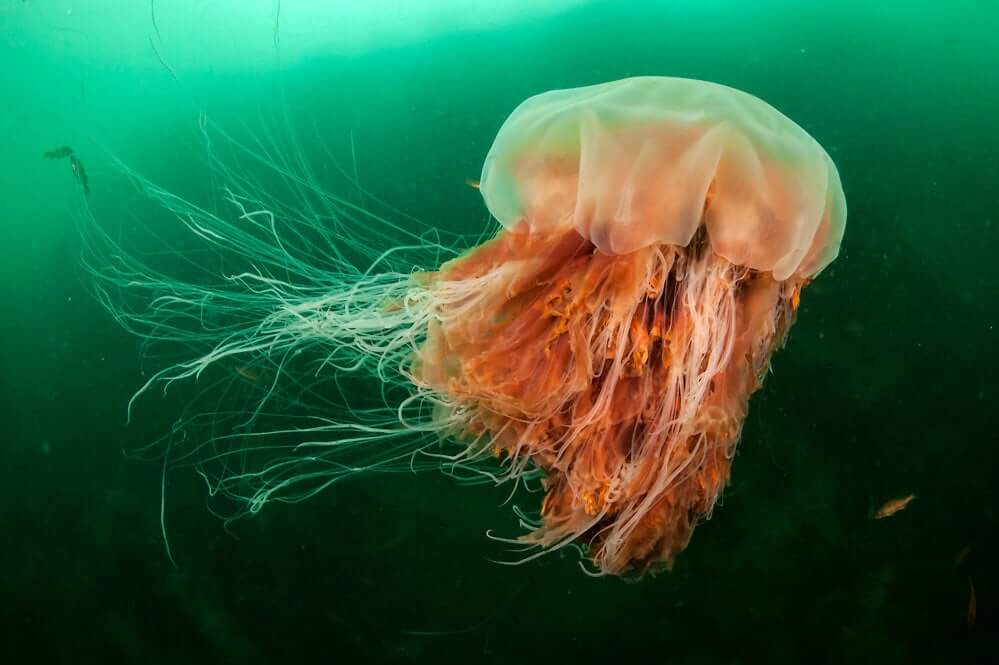
The Arctic jellyfish is considered the largest in the world. It lives in the Northwestern Atlantic Ocean. Its giant dome can reach 2 meters, and translucent tentacles grow up to 20 meters long. It has different colors, but usually, there are light orange ones (with age, the color becomes more saturated).
Its body consists of 95% liquid and is shaped like a mushroom. The jellyfish's numerous tentacles can extend up to 20 meters.
Interesting fact: the Arctic giant jellyfish appears in the short story "Lion's Mane" by Arthur Conan Doyle.
2. The sea wasp is the most dangerous creature on the planet
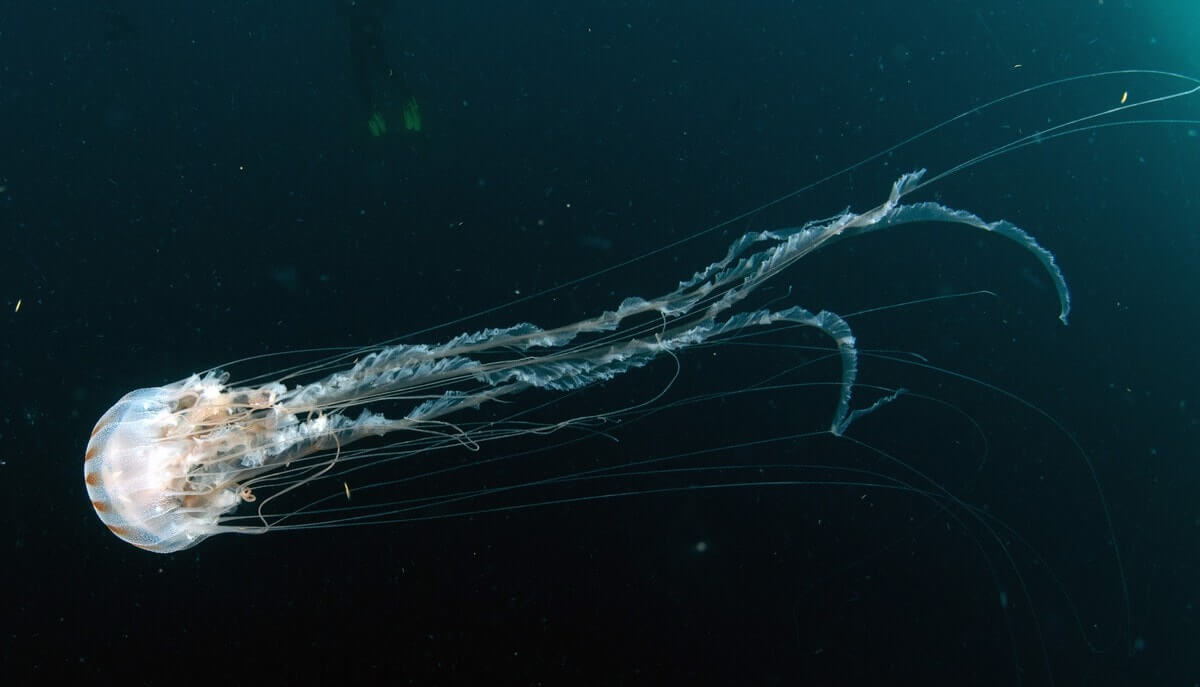
The bite of a sea wasp (cubomedusa) can be fatal, and this is one of the most dangerous inhabitants of the underwater world. The size of the bell-2.5 meters can identify sea wasps. It has a transparent shell; it has a beautiful appearance. It lives in the Pacific region of India and on the coasts of the Australian continent.
Sea wasps kill hundreds of people yearly with their tentacles, but the jellyfish do not feel threatened when it does not sting.
3. Turitopsis nutricula - an immortal living creature
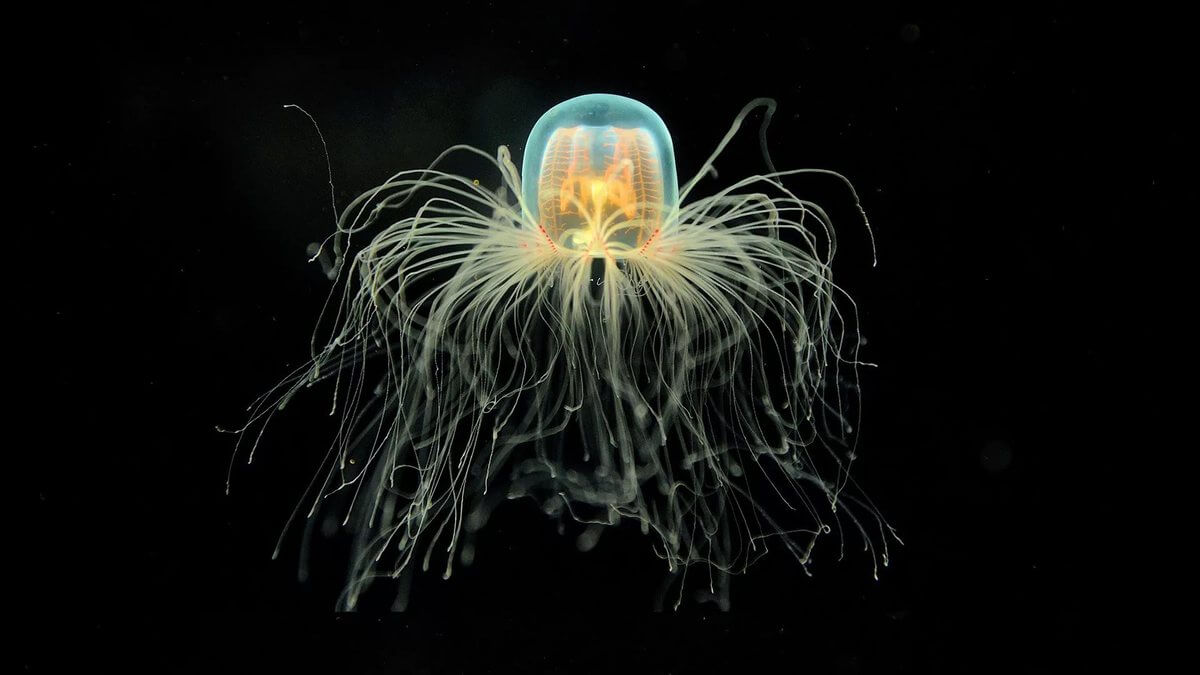
What is the secret of young Turritopsis nutricula? This jellyfish is the only creature that can live forever. Reaching maturity, it again turns into a young individual. It is noteworthy that this cycle repeats endlessly. The only thing that can cause Turritopsis nutricula to die is being killed.
Biologists also know of "immortal" cells that can divide countless times under favorable conditions. These include, for example, stem cells.
4. Almost 98% consists of water
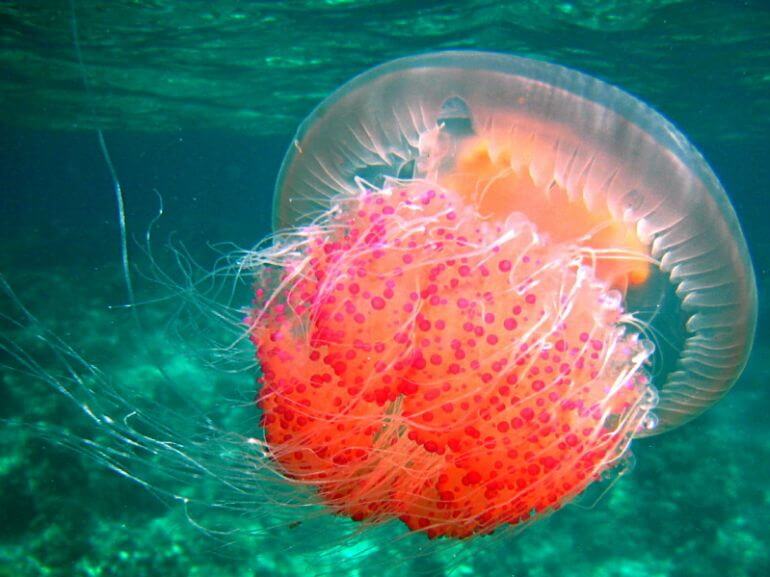
This fact may be surprising, but jellyfish are 98% water. When the jellyfish dries up, it leaves only a trace in the sand; there is no shell. Among marine animals, not only jellyfish have jelly-like bodies; for example, anemones, hydra, and polyps – corals also do not have solid skeletons, and all live in seawater.
Even though the jellyfish is 98% water, it causes painful burns.
5. Jellyfish are one of the simplest animals in the world

Jellyfish are amazing creatures. They cause conflicting feelings: delight, admiration, and even fear. The oldest animals on our planet belong to the simplest coelenterate organisms. A jellyfish has no brain or sense organs. But they have a nervous system that helps them detect odors and light. Jellyfish also use it to detect the touch of another organism.
Isolated clusters of nerve cells in jellyfish are only 8; they are located on the edge of the umbrella of the jellyfish. Its nerve clusters are called ganglia.
6. Used in medicine and food

Jellyfish are a delicacy in Eastern countries. In Japan, Korea, and China, these underwater creatures have been eaten for a long time, called "crystal meat," and these dishes were considered refined delicacies.
It is also known that jellyfish were part of the diet of the ancient Romans. Jellyfish meat contains a lot of useful substances, amino acids, and trace elements.
In addition, jellyfish are also used in medicine. Chinese doctors advise consuming gray jellyfish (processed) daily for infertility patients. Moreover, Chinese women confirm the effectiveness of this method. Interestingly, jellyfish are also used to prepare a remedy that helps eliminate baldness.
Interesting fact: if there are no jellyfish dishes in China and South Korea on a fish restaurant's menu, then the restaurant cannot get the highest category.
7. The four main classes of jellyfish
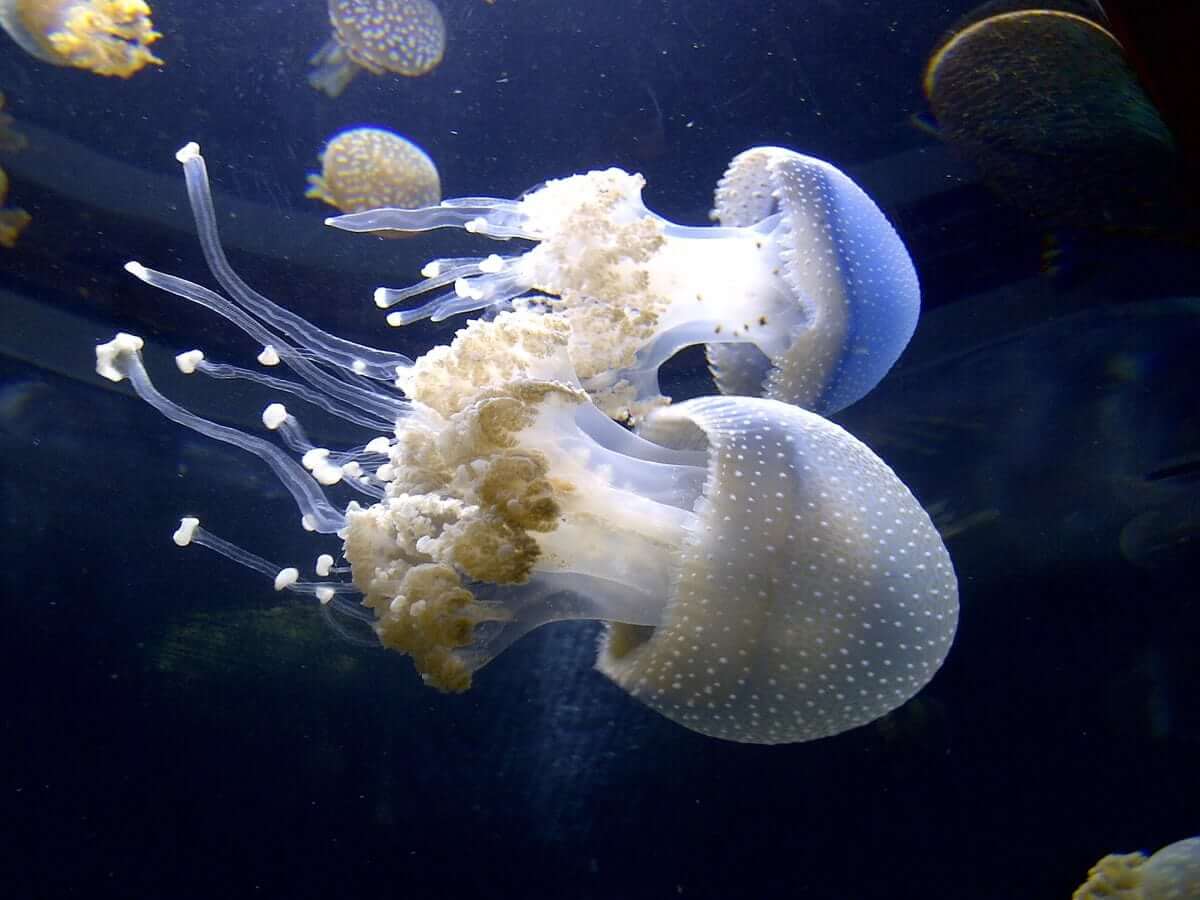
Many species of jellyfish are known in nature, and despite their primitive structure, they are all very diverse. There are four main classes of jellyfish: scyphoid, hydroid, cubomedusa, and staurozoa. Let's look at these types in more detail.
Scyphoid: This class includes jellyfish that inhabit the seas and oceans. They live in saltwater and move freely in the underwater world (except for the sedentary jellyfish – it is sedentary).
Hydroidic: this species differs from the rest in an amazing ability – the jellyfish can live forever, as the hydroid is regenerated from an adult to a child's body. They include more than 2.5 thousand species.
Cubomedusa: this species can be called the most dangerous (called "sea wasp"). If a person meets it, then he will face a fatal outcome. During the Second World War, this jellyfish became the scourge of sailors who found themselves in the water. Every year, approximately 80 people die from jellyfish venom.
Staurozoa: stauromedusae representatives cannot swim and lead a bottom-dwelling lifestyle. Their shape is quite peculiar; it looks like a kind of funnel. Its movements are slow, and the jellyfish usually prefers to sit in one place. Stauromedusa is considered an unusual organism that combines the features of a polyp and a jellyfish.
8. They also live in freshwater
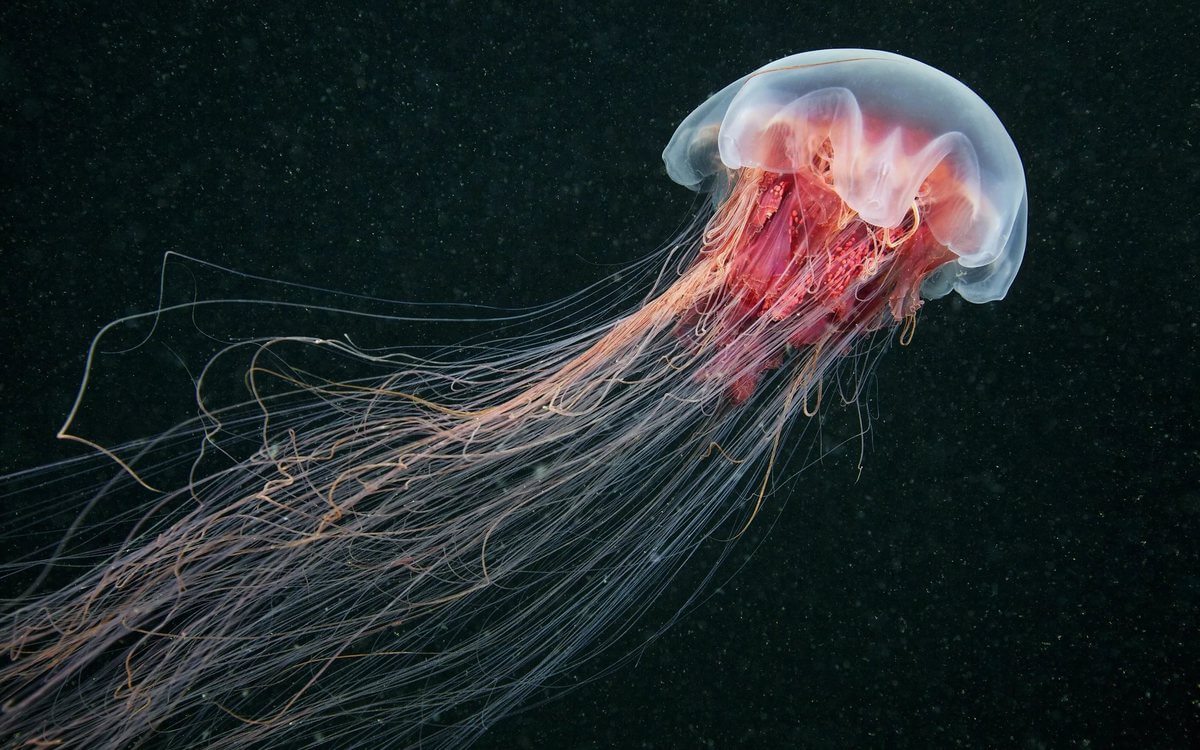
It is known that jellyfish can only live in water. If they are washed ashore, they will die from drying out in the sun. There is a species that feels great in fresh water-it is called Craspedacusta sowerbyi. Such a jellyfish can be kept in a home aquarium, but it requires a certain amount of food and compliance with the conditions.
Freshwater jellyfish live in almost all continents (except Antarctica) in river pools with a slow current and in stagnant reservoirs. Craspedacusta sowerbyi also lives favorably in artificial ponds.
9. They live in all the seas and oceans of the Earth
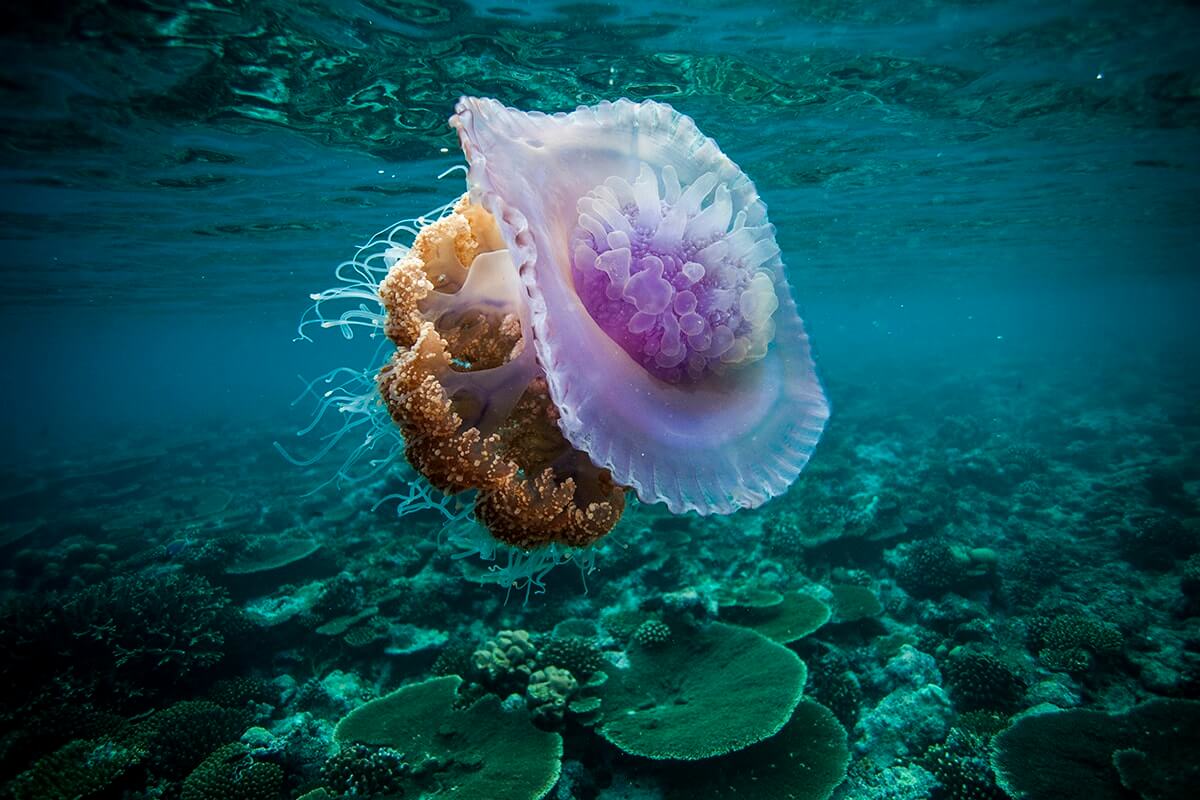
The seas and oceans are home to magnificent and diverse creatures, some of which are jellyfish. The underwater world is poorly understood, so a meeting with various animals can be a disaster for a person.
If you ask someone: "What do you think is the most dangerous inhabitant of the underwater world?" then, for sure, everyone will answer with one voice: "Shark," but there are more dangerous creatures…
Millions of people are exposed to" burns " when interacting with jellyfish every year. There are no hazardous jellyfish in the Russian seas, but the main thing is to avoid contact with mucous membranes. Jellyfish live in all the oceans of the Earth and almost all seas, so before traveling, you need to know in advance what species are common in this place.
10. They appeared on the planet about 650 million years ago
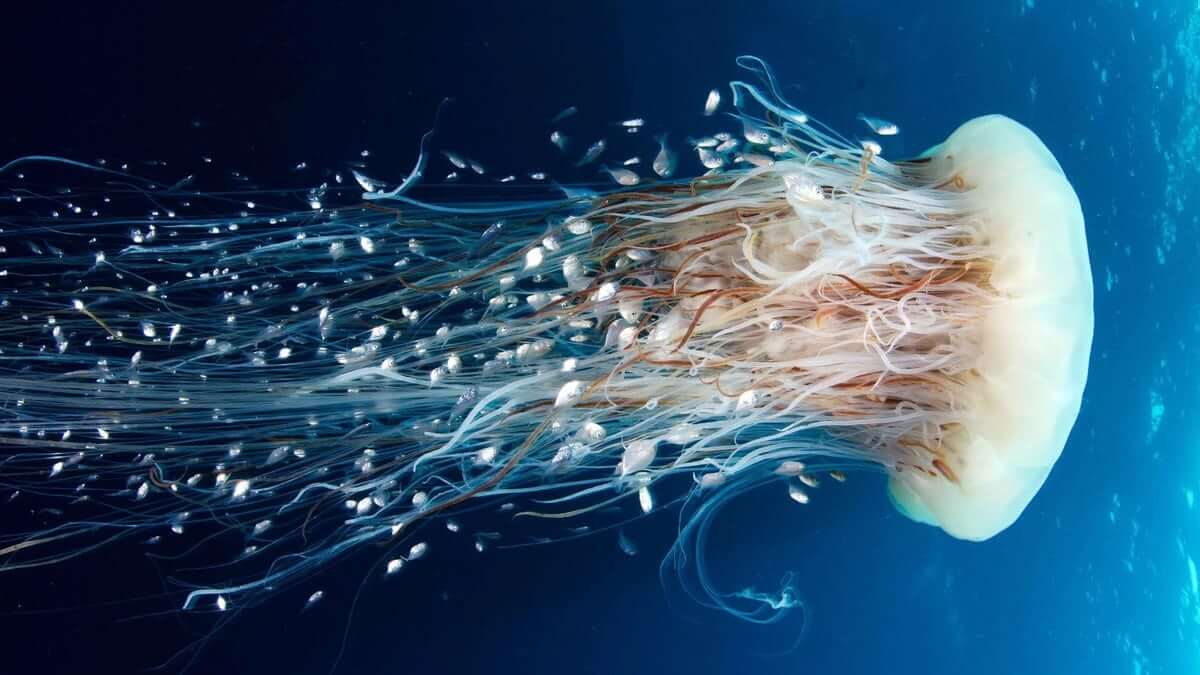
Long-lived jellyfish have always been, are, and will always be. These creatures appeared 650 million years ago. Without them, no ocean is possible. Some species of jellyfish live in fresh water. About 3,000 species are known, but most still need to be studied.
Getting to the jellyfish is difficult because some representatives live more profoundly in the water-deeper than 10,000 meters. Some people compare these centenarians to fish, but they have nothing in common except their habitat. Most clusters of jellyfish have their definition – they are called a swarm (which means a cluster).





